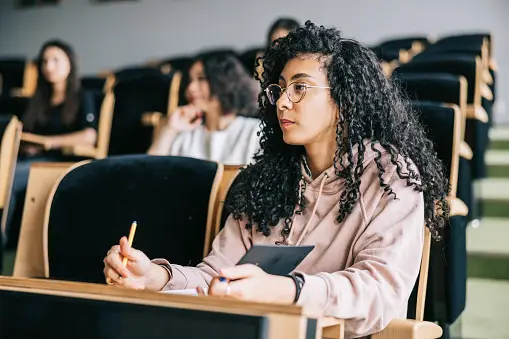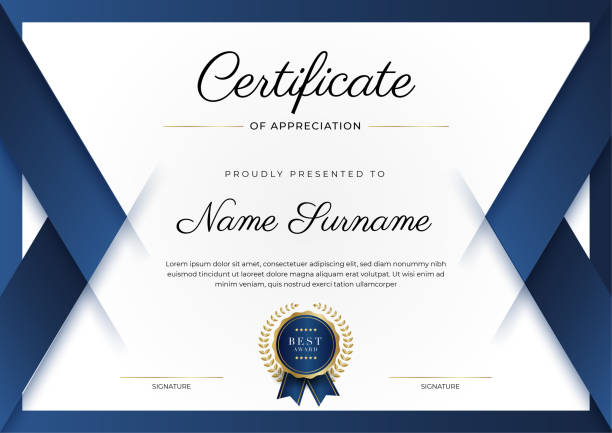
Teaching Portfolio
Enthusiastic elementary educator providing creative lessons and engaging classroom instruction to promote the goals of literacy, critical-thinking, problem solving, collaboration skills and applications to everyday life for all students.
Skills Summary
Teaching and Subject Areas of Concentration
K-8 Certified
Although my original plan was to teach early primary, a Fourth Grade student teaching position in the Chicago Public School System changed my mind by allowing me to experience older students' curiosity and desire to learn. Since then, I've gain experience teaching Second, Third and Fourth Grades.
Learn MoreLanguage Arts
Development of reading and writing skills is critical for every student. I hold an endorsement in Language Arts, along with certification to teach Italian (strengthened by a semester in Rome and a year teaching in a Milan High School following my undergraduate education).
Learn MoreESOL
A Master's-level concentration in English to Speakers of Other Languages (ESOL), along with my own experience learning another language, have armed me with proven teaching techniques, professional resources and knowledge of the special requirements needed to teach in a diverse classroom environment.
Learn MoreTeaching Philosophy
Goals and Classroom Implementation
Curriculum
Develop and implement units and lessons based on standards, materials available, student interest, and cross-curricular subjects.
-
Create lessons that are founded in the Common Core State Standards, and challenge students to apply basic concepts to real-world contexts.
-
Promote literacy, critical-thinking, problem solving, collaboration and applications to everyday life for all students.
Assessment
Apply varied assessment methods to measure the knowledge gained by students and to improve student learning.
-
Summative Assessment including use of pre and post tests to show growth and mastery of a concept.
-
Formative Assessment to assess the need for adjustment in instruction to increase student learning.Example: When results of an exit slip showed students did not grasp the desired concept, instructional plans were adjusted. Using a different approach allowed students to learn the material, ensuring the method of instruction wasn’t what made the topic difficult
-
Informal Assessment – ongoing monitoring to evaluate student comprehension and modifying lesson plans as needed. Example: When a quick check on a whiteboard revealed students didn’t understand the lesson’s objective, instead of moving on I adjusted and revisited the topic through another method.
-
Student Formative Self-Assessment to allow students to reflect on their own understanding of the lesson’s learning goal. (Master's Action-Based Research Project).
Example: Allowed students to think and write about their understanding of a math lesson, explain their strategies and reasoning to solve problems and their communication of a solution. -
Standardized or Norm Tests,such as MAP testing or STAR testing, that use data to determine what needs to be a focus for instructional material.
Example: Using MAP data to identify areas of improvement for Math and ELA standards, I designed and implemented units to develop these skills. For example, a unit focused on text structure and genre improved students’ MAP scores, and use of a common formative assessment as a pre and post-test showed students had a greater understanding of structural elements of text genres.
Example: Reviewed STAR math and reading scores to see areas of weakness and strength in these subjects, as well as to determine how to group students based on ability, and to adjust groups as student understanding changes. After administering STAR test multiple times throughout the year, data showed average student growth increased by a grade level.

Hands-on activities can increase student engagement and comprehension, as in this fun-with-physics "Don't Break Your Egg" vehicle restraint science project.

Having students take turns reading aloud is one way to learn, share and celebrate diversity in the classroom.
Differentiation and Diversity
Working in both public and private, and in urban and rural schools, I have gained experience in diverse classroom settings. When creating lessons, I take students’ cultures, backgrounds, levels of knowledge/skills, and learning styles into consideration and provide multiple means of access to materials.
-
Coordinate classroom learning to achieve a balance between whole group instruction, small group collaboration and individual work
-
Use diverse methods of instruction to allow for auditory, kinesthetic and visual learners to be successful.
-
Utilizing technology resources to enhance lessons.Example: Incorporated Seesaw activities that allow students to practice and show the mastery of a math skill by drawing, writing or audio recording their math thinking.Example: In a collaborative project, students wrote, typed and shared a reader’s theater script with a classroom in another state. This allowed students to use technology while also working on literacy standards.
Life-long Learning
As a teacher I aim to encourage life-long learning in all my students. Exposing students to opportunities beyond the classroom is one way to foster a love of learning.
-
Take advantage of the surrounding environment to provide meaningful field trips that relate the content to resources or the history of where I’m teaching.
-
Relating the material to students’ lives. Example: In an effort to promote literacy, I implemented novels that related to 4th graders. Interacting with the text by close reading and discussion with their classmates promoted a desire to read.
-
Use personal experiences to teach students about the world beyond their community. Example: While teaching in a rural community, I shared stories of my urban life experiences (Chicago, Rome, Milan, Portland, OR) to broaden my students' view of the world beyond what they know.
Hands-on activities can increase student engagement and comprehension, as in this fun-with-physics "Don't Break Your Egg" vehicle restraint science project.

Having students take turns reading aloud is one way to learn, share and celebrate diversity in the classroom.
Collaboration and Communication
-
Maintain regular communication with principal. An open relationship promotes opportunities for support in the various areas of teaching including curriculum, behavior issues, parental involvement and other concerns within the school.
-
Strong communication with parents and guardians is essential.
-
Contact parents/guardians when problems arise, but also when a student has done something successful in the classroom to help develop positive parent-teacher relationship.
-
Collaboration with fellow teachers to share ideas or provide support. Example: While a recent position didn’t have other same-grade-level teachers, I held frequent discussions with teachers from lower/higher grades on how curriculum relates to previously learned content and the skills and concepts needed for future applications of topics. Example: Worked with other same-grade-level teachers from other schools during Professional Development days to share and dissect best practices related to math standards.
Classroom Management
-
I hold each student accountable for his/her learning to encourage him or her to succeed in the classroom.
-
The classroom environment is one that fosters respect for all, responsibility for actions, and readiness to learn.
-
Descriptive classroom procedures direct students to the type of behavior they are expected to demonstrate. Continual practice and opportunities for leadership allow students to develop habits that promote learning.
-
Students develop independent work habits as well as collaboration with peers, through varied classroom opportunities.
-
I have a high expectation for all students, requiring them to put forth the effort and work that they are all capable of. When a student doesn’t reach this expectation on a particular assignment, I give them the chance to reflect on what they did and provide the opportunity to improve on their understanding.
Lesson Portfolio
Sample Lesson Plans (PDFs) & Video Examples
Teaching Experience
Work History & Highlights
Teacher 2nd and 4th Grade
Saint Bernadette Elementary Burien, WA
-
Implement Grade 4 Common Core and state curricula in planning, teaching, assessment, and standards-based grading
-
Facilitate social and emotional learning through daily classroom meetings to promote student problem solving of self-identified issues, such as feeling disrespected, listening and attention distractions, working cooperatively and misusing class work time
-
Implement scaffolding strategies to encourage independent learning. Example: Established Reader’s Workshop book clubs where students jotted thoughts and ideas while reading, then shared and responded with peers, ending with written reflection
-
Incorporate Google Classroom and Seesaw for students to access materials, lessons, and share understanding of concepts in various methods to promote technology literacy, during remote and in-person instruction
-
Develop interdisciplinary skills through cross-curricular research projects and presentations. Example: Designed a Washington History Fort Project where students worked in collaborative teams to research, analyze and apply their knowledge by planning, designing and creatively building a new Washington fort
-
Promote student self-reflection of identifying celebrations and improvements using data notebooks to track learning progress of standards on weekly assignments and opportunities
-
Leadership position in the archdiocesan-wide GRACE program to promote staff professional development and professional learning communities with colleagues, 2018-present
Teacher 4th Grade
Saint Joseph Elementary Redding, CA
-
Implemented Grade 4 Common Core and state curricula in planning, teaching, assessment, grading and behavior modification
-
Integrated “Project Lead the Way Launch” to promote collaborative problem-solving STEM challenges
-
Encouraged and monitored individualized at-level reading and deepen comprehension through Accelerated Reader program
-
Employed a variety of learning modalities and ESOL strategies to engage and support all learners
-
Organized off-campus learning, including an overnight trip linked to state history curriculum standards
-
Utilized iPads, Chromebooks, and ELMO technology daily to advance lessons, content, participation and student skills
Teacher 3rd Grade
Sacred Heart Elementary Red Bluff, CA
-
Structured classroom routines and management strategies to student needs to foster individual student and classroom successes
-
Communicated with families face-to-face, through newsletters and e-mails to build rapport and celebrate student achievement
-
Instructed students in Physical Education exercises, team-building activities and team sports to maintain good body health
English Teaching Assistant 9th-12th Grade
Liceo Leonardo da Vinci Milan, Italy
-
Assisted principal teachers in 12 various-level classes by developing original curriculum, presentations and assignments to enhance students’ English-as-a-Foreign-Language speaking and writing skills
Student Teaching 4th Grade
Goudy Elementary Chicago, IL
-
Planned and executed five literature circles based on Lexile scores to deepen comprehension and critical thinking
-
Fostered social-emotional understanding of empathy and respect in a diverse classroom based on Second Step curriculum
-
Promoted analysis and applications of geometry and fractions following Engage NY Common Core Math Curriculum
-
Enhanced eight struggling students’ understanding to raise assessment scores in Geometry Targeted After-school Program
Certification and Education
Licensure and Certification
-
Washington Residency Teacher Education Certificate, 2017-present
with Elementary Education Endorsement, Grades K-8 and English Language Learner Endorsement
Education
-
Master of Education
University of Portland, Portland, OR English to Speakers of Other Languages (ESOL) Endorsement Pacific Alliance for Catholic Education (PACE) Two-Year Teaching Service Program
Education is the most powerful weapon which you can
use to change the world.
– Nelson Mandela